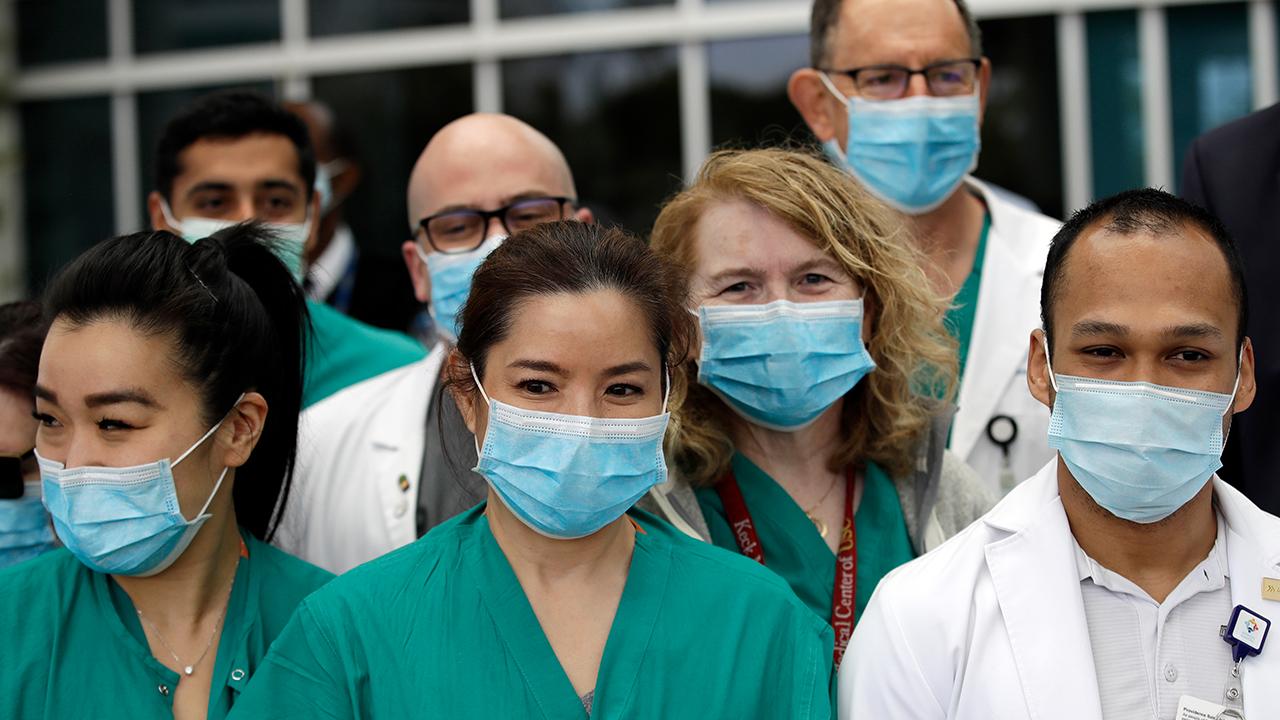Hospitals' financial losses, layoffs from coronavirus are a disaster
US urgently needs a new strategy to equip hospitals to cope with a major pandemic
Get all the latest news on coronavirus and more delivered daily to your inbox. Sign up here.
This won’t be the last pandemic. Once we’re through this one, we must determine what we did right, what we did wrong and what we can do better next time.
One thing to examine in this after-action review is the condition of our hospitals and medical practitioners. Ironically, the steps taken to keep them from being overwhelmed by COVID 19 patients have left many on the verge of bankruptcy.
555 CORONAVIRUS CASES AT IOWA TYSON PORK PLANT
To “make way for COVID,” the government required medical providers to postpone all elective procedures. As income from these services dried up, hospitals were tasked with providing the most expensive type of care for those hit hardest by the virus.
The results have been disastrous.
Many patients did not have their cancers diagnosed in a timely way, much less treated. Many more suffered additional pain awaiting hip and knee replacement surgery, back surgery and so on.
Financial losses are also enormous. The American Hospital Association predicts hospital losses of more than $202 billion from March to June. Private medical practices, outpatient facilities, and rural and safety-net hospitals are being hit especially hard.
This has produced unprecedented layoffs. More than 1.4 million medical jobs were eliminated in April—a 9 percent drop in just one month. Health professionals not directly on the frontlines have been sidelined; many physicians are losing their practices.
Washington hopes that an infusion of new federal funds will repair the damage it’s created—a completely backward approach.
Before the next pandemic hits, we’ll need a far better strategy. Here are three suggestions.
AFTER CORONAVIRUS, EMPLOYEES WANT WORKPLACES TO PHYSICALLY CHANGE: SURVEY
Use Isolation Facilities, Not Shut-Downs. Pre-select hospitals that can be quickly converted into infectious disease management facilities and give them a stockpile of needed equipment and supplies. With suspected infectious disease patients directed to those facilities, the remaining hospitals could continue to provide all the other types of medical care.
This arrangement would improve patient access and timely treatment while reducing the risk of infection. Meanwhile, the designated hospitals would work to enhance infection control procedures, convert rooms to negative pressure, and ramp up resources and personnel for the outbreak.
All hospitals should practice transitioning to pandemic mode. Designated isolation hospitals should hold periodic drills to practice transferring uninfected patients to other facilities while rapidly converting for pandemic use. Non-isolation hospitals would drill by implementing a process to screen and redirect potentially infectious patients while providing other patient care as usual.
This approach has been successful before. During the 2014 Ebola outbreak, the Centers for Disease Control recommended a three-tiered approach to manage patients exhibiting Ebola-like symptoms. Certain hospitals became designated treatment centers; others were designated “assessment” hospitals or front-line hospitals with specific parameters for care. The approach included requirements for transfer protocols and medical resources like personal protective equipment.
Preparing the Next-Generation Medical Workforce. We must ensure enough medical professionals will be available during the next crisis.This year, many hospitals refused to allow medical and nursing students on-site and other medical facilities closed down. This response has disrupted the health care workforce educational pipeline, which was already plagued with shortages.
We need a strategy that would allow students to learn in a safe environment throughout a pandemic and let students in fields such as infectious disease and intensive care learn from seasoned health professionals who have cared for patients with a novel virus.
Payment policy. Rather than toss cash at providers they closed down, Washington should adjust payment to reflect this new, more targeted approach. Ideally, they would use specialized reimbursement to reward medical professionals on the front line during a national medical emergency.
GET FOX BUSINESS ON THE GO BY CLICKING HERE
To facilitate a quick pivot to this new strategy, state and federal pandemic funding could be directed to designated isolation hospitals. And, non-designated hospitals could continue their usual mission, sustaining revenue and providing a normal continuum of care.
The health sector’s severe economic losses have been largely driven by well-intended public policy. While halting elective procedures during the initial phase of the pandemic was warranted, we have more data and better understanding now.
In the coming months, the federal government should offer pandemic designation guidelines for state public officials, hospitals representatives and local authorities. Before providing additional federal subsidies, it should also require states to design a comprehensive, coordinated plan for infectious disease management. With 90 percent of COVID-19 cases in just 20 states, it is clear America’s response must include a plan for safe, continuous care of non-infectious patients while ensuring containment of the novel virus.
America needs a new approach for the next wave of this coronavirus or the next pandemic. Our healthcare system should immediately consider moving forward with designating pandemic hospitals as part of preparation for future threats from infectious disease. We cannot afford to wait.
Daniel "Stormy" Johnson, MD, FACR is a former Visiting Fellow at the Heritage Foundation. Amy Anderson, DNP, is a former graduate fellow at the Heritage Foundation.






















